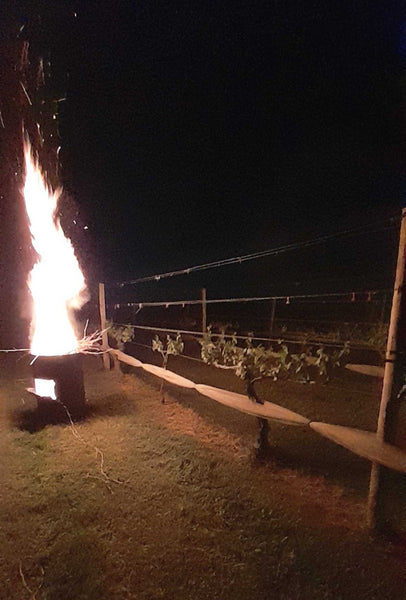Aging Wine: Sip Now or Save for Later
Like people, some wines age well and others...well, not so much - they just fall apart. We’ve put together a few basic guidelines for selecting which wines to sip now and which bottles to save for later.
-
The Sweet Stuff
Take a step back. Ask yourself - is this wine fun and fruity, like our Heritage White, or a serious dessert wine, like our Cool Foxy Lady or a Sauternes?
If it’s fun and fruity, drink it now. It’s ready to pour. Enjoy a relaxing evening out on the porch. Whip up a pitcher of sangria. Invite some friends over. Have fun and enjoy - that’s what these wines are for.
If it’s a serious dessert wine, lay it down for later. Dessert wines like our Cool Foxy Lady or a Sauternes, will age beautifully. High levels of residual sugar preserve and stabilize wines during aging. These wines will age 5 to 10 years or more.
-
Big Red Blends
Not all big red blends are created equally. Some are ready to drink right away. They may have a bit of sweetness to them, a bit of juiciness, very ripe fruit, without much (if any) tannic grab. Such wines are not worth laying down. They seem easy to drink because they are - so drink them now.
Other red blends deserve a place in your cellar. These are dry reds with good structure and tannic grab. They are big and bold. The grab you experience on the palate is important - tannins are what allow the wine to age well. Our 2012 Big O is a Bordeaux-style red blend and, like its French counterparts, age-worthy. It will age well for 10+ years. The 2012 is similar in many ways to our great and highly rated 2010 Big O. Cam expects this wine to improve over the next 6-8 years, and to remain world-class for an additional 10 years. It's great now, but the future is genuinely huge.
Our 2012 Pheasant Hill Vineyard Syrah is a red blend as well. Reminiscent of a traditional Cote-Rotie, the 2012 Syrah includes a small percentage of the white variety Viognier. This wine is built to last. Put a bottle in your cellar. As Cam says, You can thank me later.
-
Consider Structure
Think about the components of the wine. Does it have bright acidity? Does it have tannins? Are the flavors intense? Acidity and tannins are important for aging. The acidity will soften, the tannins will mellow, and the aromas and flavors will become more complex. The 2012 Pheasant Hill Chardonnay, for instance, will continue to evolve. Next time you taste this wine, consider the intensity of flavor and the bright acidity. At a 2015 staff meeting, the Unionville team enjoyed a 2005 Pheasant Hill Chardonnay...it was gorgeous.
-
Fortified (But Not Like Your Breakfast Cereal)
Fortified wines are fortified with distilled spirits. With a good level of residual sugar and a warming alcohol content (our Ports top out around 18.5%ABV), Port wines are great candidates for your cellar.
-
Call a Lifeline
When in doubt, ask the knowledgeable staff at your local wine shop or winery tasting room. We are happy to answer any questions - our tasting room is open 7 days a week, 12 to 5pm. Currently, we highly recommend stocking your cellar with The Big O, Amwell Ridge Viognier, Pheasant Hill Chardonnay, and Pheasant Hill Syrah (2012)- all are still evolving to higher levels.
1 Response
Leave a comment
Comments will be approved before showing up.
Also in Unionville Grapevine

The Best Wines are the Ones You Fight For
We picked from 5am that day until a little past midnight, almost 19 hours of harvesting. The pick was only interrupted for bathroom breaks, pizza, and eventually some beers to keep morale high. I think the high morale beer was Miller High Life, although the details are fuzzy and it would only have been selected ironically. It was the most tenacious day I can recall in the field here. We picked nearly 10 tons from three different vineyards, finishing with the Pheasant Hill Chardonnay. We saran wrapped the bins during transport and weighing back at the winery as Ophelia's first raindrops splashed down just after midnight.



Jennifer Coffey
April 23, 2015
Question: I have a bottle of you Pino Noir Clone 5. Will it age well or should I hurry up and drink it? Thank you!